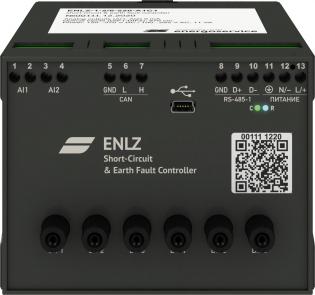ENLZ
ENLZ devices are used for localization of short circuits and single line-to-ground faults in underground cable networks, providing short-circuit sensor data and synchrophasor measurements of zero-sequence currents and voltages to a data processing center.
The algorithm for the localization of faults is based on the analysis of the amplitudes and phases of the zero-sequence current and voltage phasors, measured at section boundaries of the distribution network.
Equipped with six optical inputs for short-circuit sensors, and two analog inputs, one ENLZ provides monitoring data for two cable lines.
To measure 3I0 and 3U0, ENLZ connects to zero-sequence current transformer, and instrument voltage transformer with 3U0 winding through a VMT step-down voltage transformer.
ENLZ uses ENCM-3 remote terminal unit for time synchronization from GPS/GLONASS. ENCM-3 transmits data from ENLZ to a data processing center via Ethernet or cellular network (3G/2G).
|
Analog inputs |
current: 0,5...70 A (through SCSS current sensor) voltage: 2...200 V (through VMT voltage transformer) |
|
Optic inputs |
POF 980/1000 mkm, wavelength 400…1000 nm, d — 2.2 mm |
|
Interfaces and protocols |
RS‑485: IEC 60870‑5‑101; CAN |
|
Power supply |
18...36 VDC or 120...370 VDC / 100...265 VAC (45...55 Hz), 6 VA |
|
Operating conditions and design |
from −40 to +70 °С, 75 × 100 × 120 mm (IP40), DIN-rail mounting |

